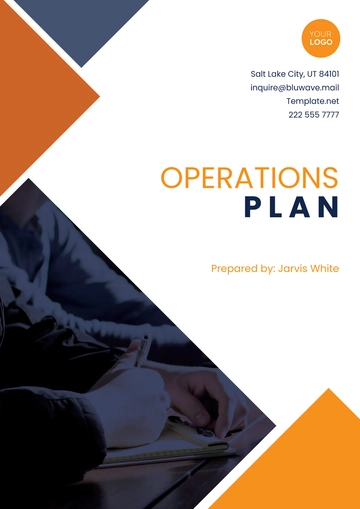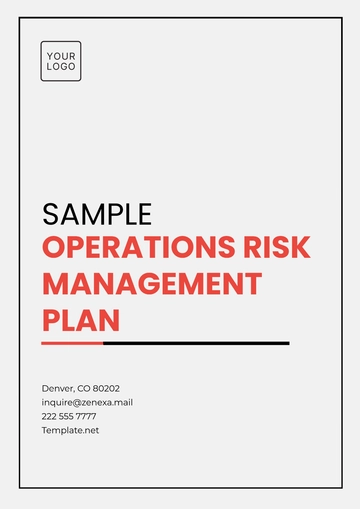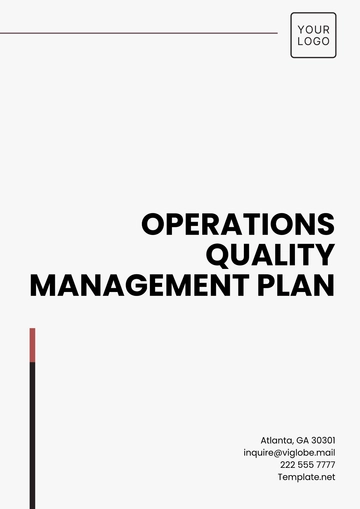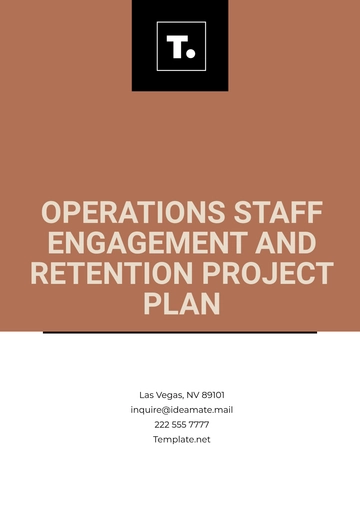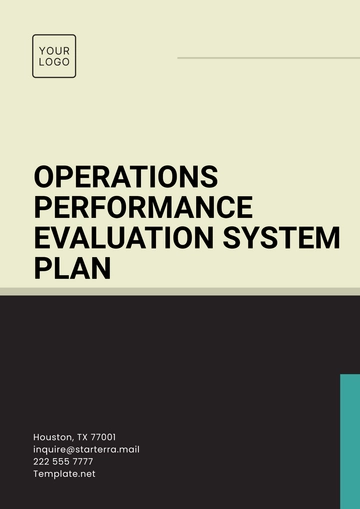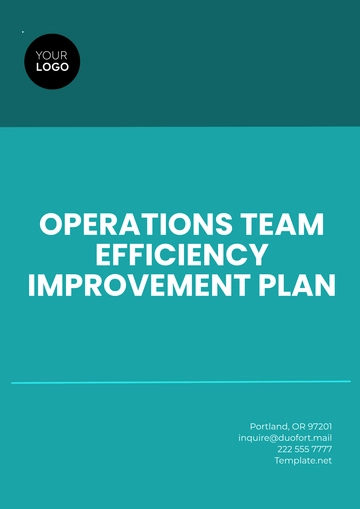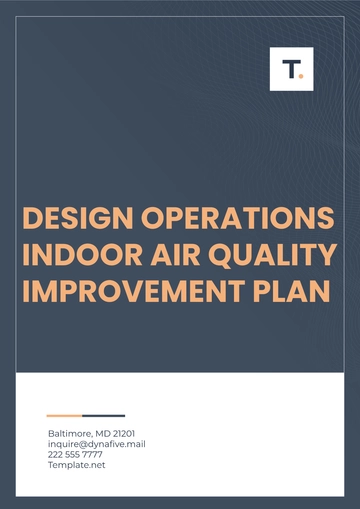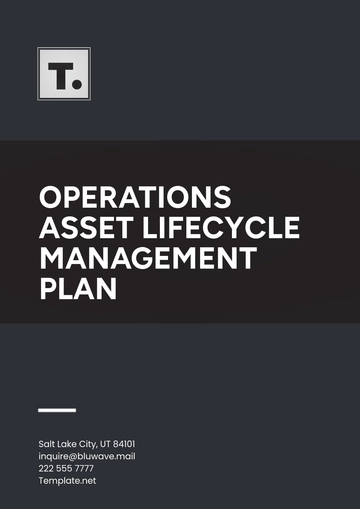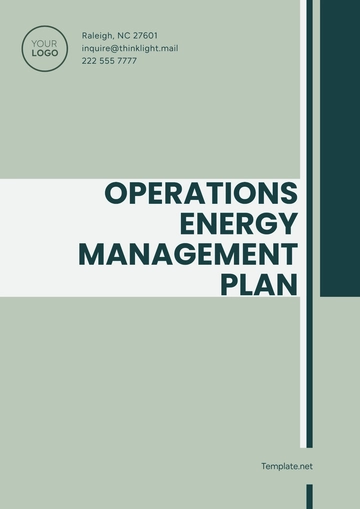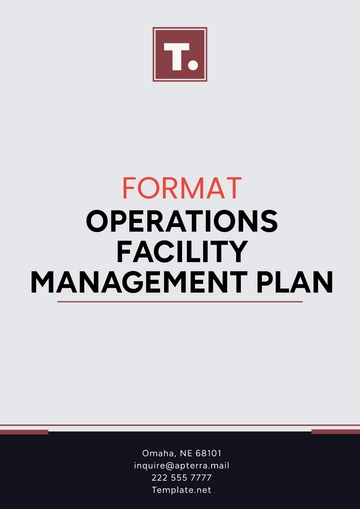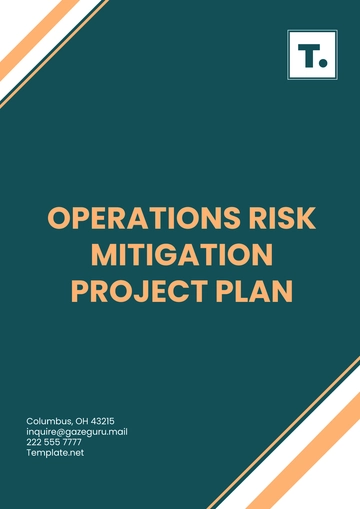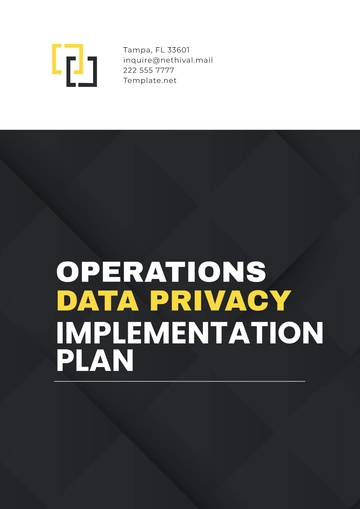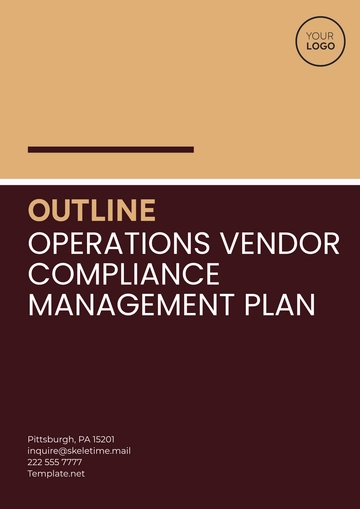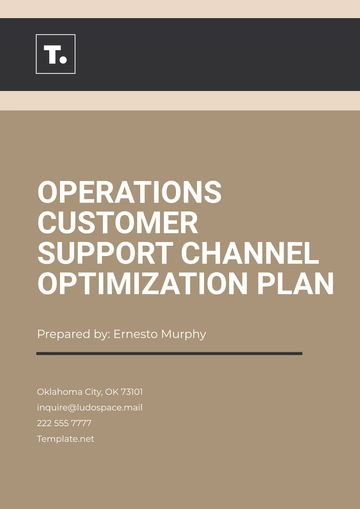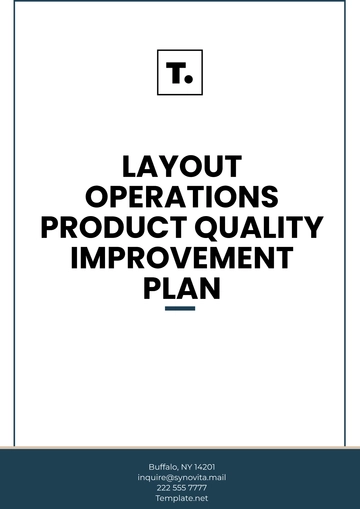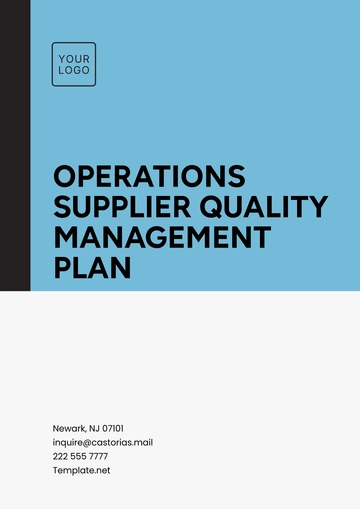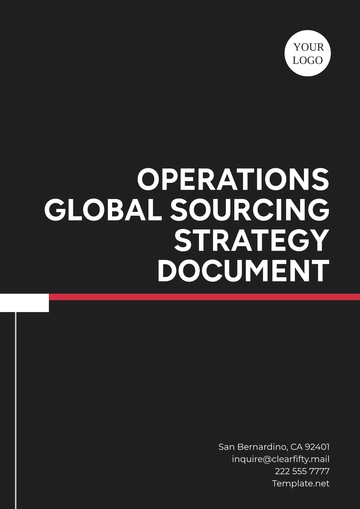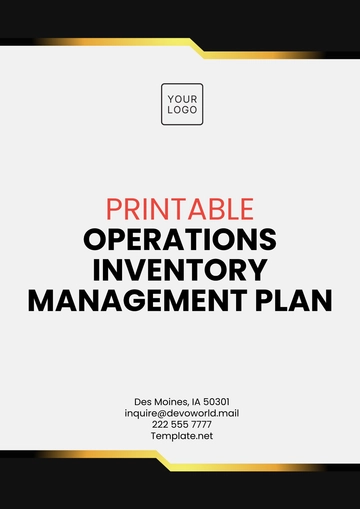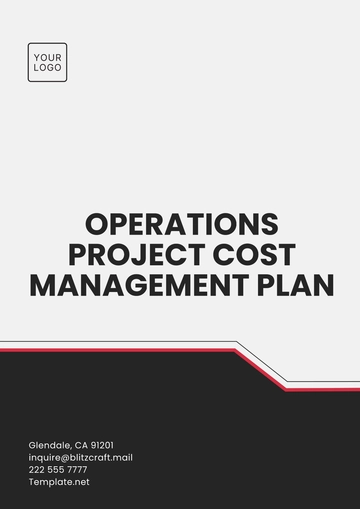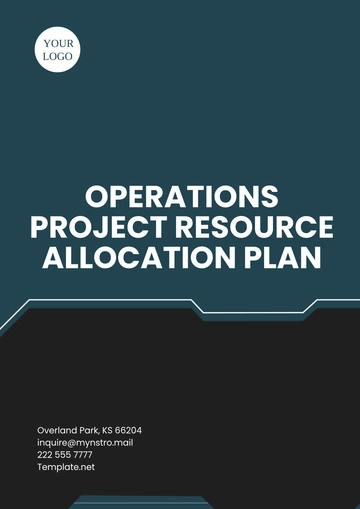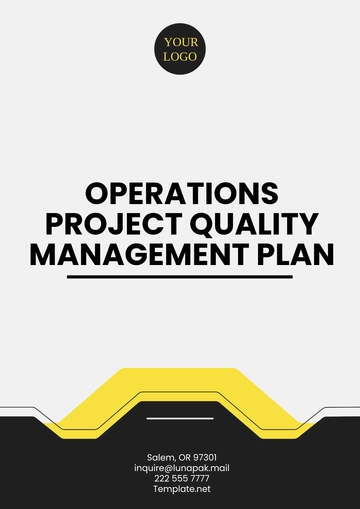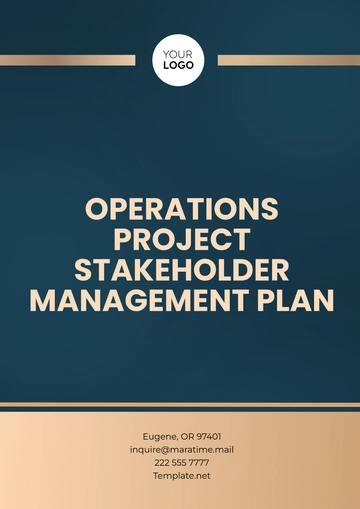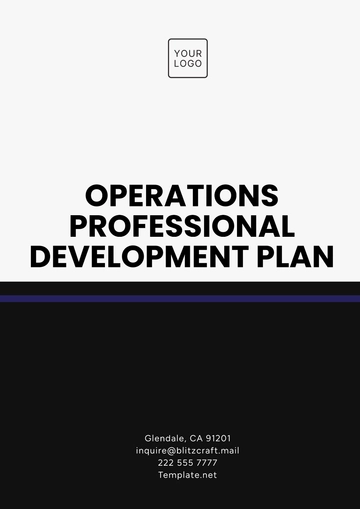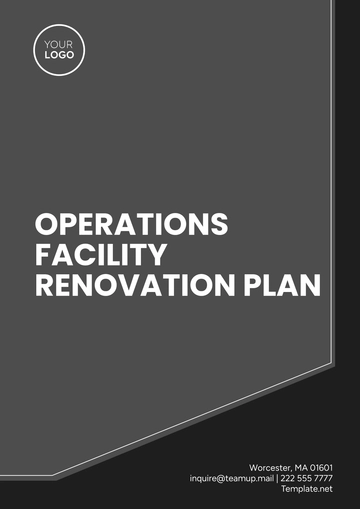Free Blank Operations Compliance Remediation Plan
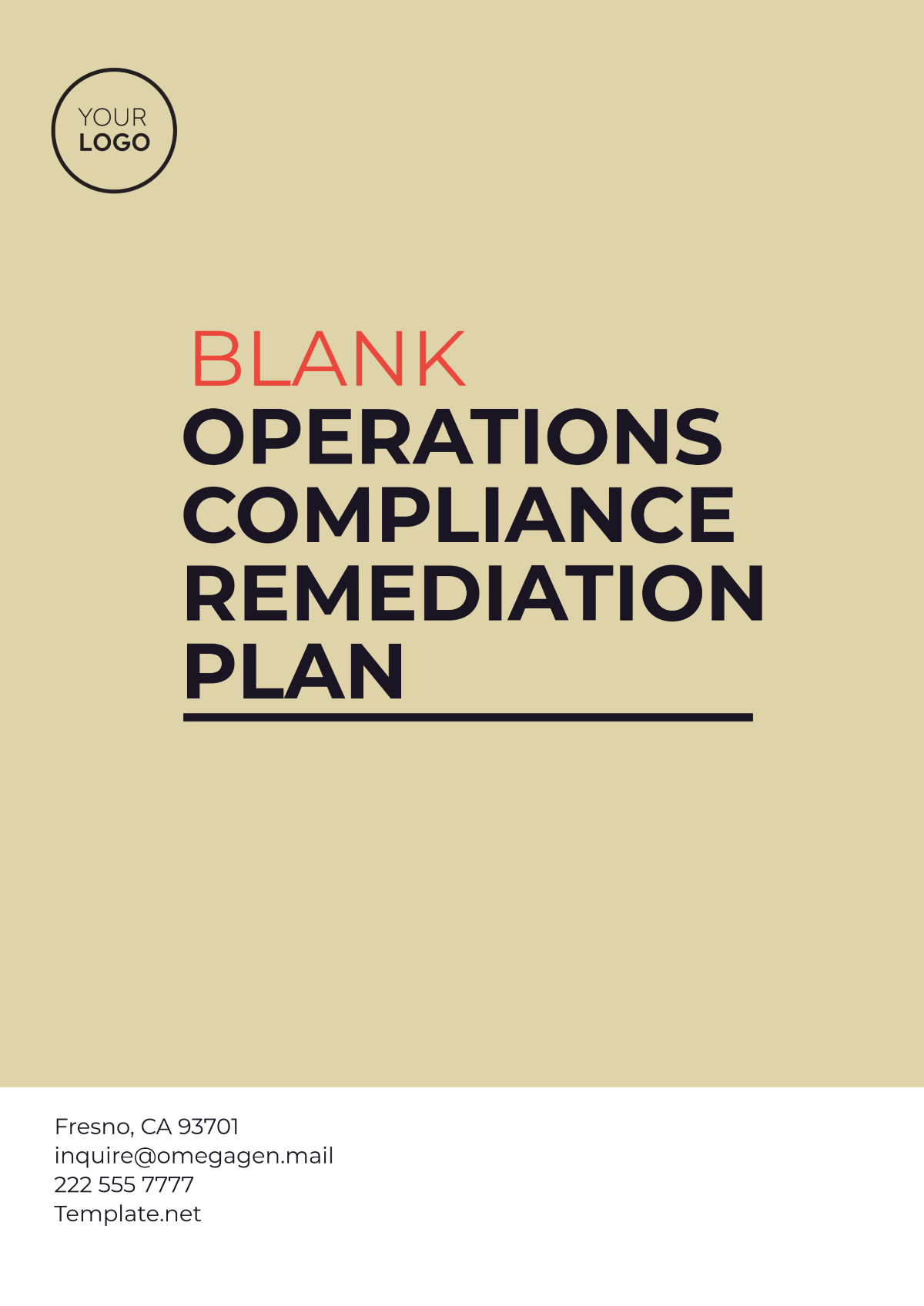
Introduction
This Operations Compliance Remediation Plan has been developed to address identified areas of non-compliance within our operations. Our objective is to ensure that all aspects of our operations align with legal regulations, industry standards, and internal policies. This document outlines the steps we will take to remediate non-compliance issues, the timeline for implementation, and the measures to prevent future occurrences.
Background
Through our recent compliance audit, several areas requiring immediate attention and remediation have been identified. These areas span regulatory compliance, data protection, operational procedures, and employee training. Our commitment to integrity and ethical conduct mandates that we address these issues promptly and efficiently.
Remediation Objectives
To rectify all identified non-compliance issues within the specified timeframe.
To enhance our compliance framework to prevent future instances of non-compliance.
To improve awareness and understanding of compliance requirements among all employees.
Remediation Strategies and Actions
Area of Focus | Issue | Action | Timeline |
Action Plans for Each Identified Issue
1. Regulatory Compliance
Task | Responsible Individual(s) | Deadline |
2. Data Protection Action Plan
Task | Responsible Individual(s) | Deadline |
3. Operational Procedures Action Plan
Task | Responsible Individual(s) | Deadline |
4. Employee Training Action Plan
Task | Responsible Individual(s) | Deadline |
Communication
Throughout the remediation process, we are committed to maintaining open and transparent communication channels with all stakeholders, including employees, management, regulators, and potentially affected parties. Regular updates will be provided through various means such as meetings, emails, and internal bulletins, ensuring that all parties are informed of our progress, understand their roles and responsibilities, and are aware of any changes to operational procedures.
Conclusion
As we move forward, we will continue to adapt our strategies to meet the evolving regulatory landscape and operational challenges, reaffirming our dedication to operational excellence and ethical business practices.
- 100% Customizable, free editor
- Access 1 Million+ Templates, photo’s & graphics
- Download or share as a template
- Click and replace photos, graphics, text, backgrounds
- Resize, crop, AI write & more
- Access advanced editor
Address compliance issues effectively with the Blank Operations Compliance Remediation Plan Template from Template.net. This editable and customizable template enables you to create a comprehensive remediation plan that directly addresses your operational compliance challenges. Editable in our AI Editor tool, it ensures targeted and effective compliance solutions.
You may also like
- Finance Plan
- Construction Plan
- Sales Plan
- Development Plan
- Career Plan
- Budget Plan
- HR Plan
- Education Plan
- Transition Plan
- Work Plan
- Training Plan
- Communication Plan
- Operation Plan
- Health And Safety Plan
- Strategy Plan
- Professional Development Plan
- Advertising Plan
- Risk Management Plan
- Restaurant Plan
- School Plan
- Nursing Home Patient Care Plan
- Nursing Care Plan
- Plan Event
- Startup Plan
- Social Media Plan
- Staffing Plan
- Annual Plan
- Content Plan
- Payment Plan
- Implementation Plan
- Hotel Plan
- Workout Plan
- Accounting Plan
- Campaign Plan
- Essay Plan
- 30 60 90 Day Plan
- Research Plan
- Recruitment Plan
- 90 Day Plan
- Quarterly Plan
- Emergency Plan
- 5 Year Plan
- Gym Plan
- Personal Plan
- IT and Software Plan
- Treatment Plan
- Real Estate Plan
- Law Firm Plan
- Healthcare Plan
- Improvement Plan
- Media Plan
- 5 Year Business Plan
- Learning Plan
- Marketing Campaign Plan
- Travel Agency Plan
- Cleaning Services Plan
- Interior Design Plan
- Performance Plan
- PR Plan
- Birth Plan
- Life Plan
- SEO Plan
- Disaster Recovery Plan
- Continuity Plan
- Launch Plan
- Legal Plan
- Behavior Plan
- Performance Improvement Plan
- Salon Plan
- Security Plan
- Security Management Plan
- Employee Development Plan
- Quality Plan
- Service Improvement Plan
- Growth Plan
- Incident Response Plan
- Basketball Plan
- Emergency Action Plan
- Product Launch Plan
- Spa Plan
- Employee Training Plan
- Data Analysis Plan
- Employee Action Plan
- Territory Plan
- Audit Plan
- Classroom Plan
- Activity Plan
- Parenting Plan
- Care Plan
- Project Execution Plan
- Exercise Plan
- Internship Plan
- Software Development Plan
- Continuous Improvement Plan
- Leave Plan
- 90 Day Sales Plan
- Advertising Agency Plan
- Employee Transition Plan
- Smart Action Plan
- Workplace Safety Plan
- Behavior Change Plan
- Contingency Plan
- Continuity of Operations Plan
- Health Plan
- Quality Control Plan
- Self Plan
- Sports Development Plan
- Change Management Plan
- Ecommerce Plan
- Personal Financial Plan
- Process Improvement Plan
- 30-60-90 Day Sales Plan
- Crisis Management Plan
- Engagement Plan
- Execution Plan
- Pandemic Plan
- Quality Assurance Plan
- Service Continuity Plan
- Agile Project Plan
- Fundraising Plan
- Job Transition Plan
- Asset Maintenance Plan
- Maintenance Plan
- Software Test Plan
- Staff Training and Development Plan
- 3 Year Plan
- Brand Activation Plan
- Release Plan
- Resource Plan
- Risk Mitigation Plan
- Teacher Plan
- 30 60 90 Day Plan for New Manager
- Food Safety Plan
- Food Truck Plan
- Hiring Plan
- Quality Management Plan
- Wellness Plan
- Behavior Intervention Plan
- Bonus Plan
- Investment Plan
- Maternity Leave Plan
- Pandemic Response Plan
- Succession Planning
- Coaching Plan
- Configuration Management Plan
- Remote Work Plan
- Self Care Plan
- Teaching Plan
- 100-Day Plan
- HACCP Plan
- Student Plan
- Sustainability Plan
- 30 60 90 Day Plan for Interview
- Access Plan
- Site Specific Safety Plan
